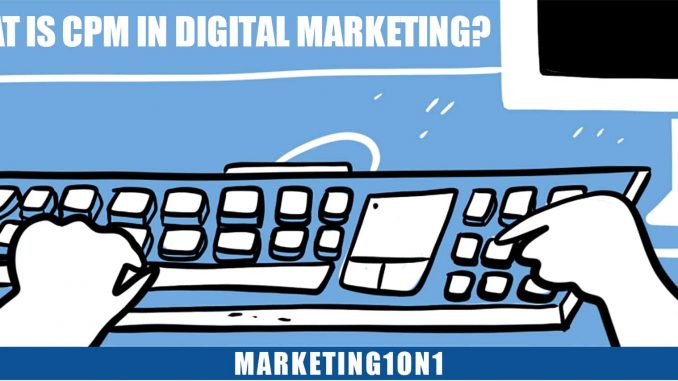
In , cost-per-mille (CPM) is a metric used to calculate the cost of reach for a given ad campaign. CPM is calculated by dividing the total cost of the ad campaign by the number of (i.e. opportunities to see the ad), and is usually expressed in terms of cost per 1,000 impressions. While CPM is often used as a key performance indicator (KPI) for digital marketing campaigns, it’s important to keep in mind that it doesn’t necessarily reflect the effectiveness of the campaign in terms of generating leads or sales. Nevertheless, CPM can be a useful metric for evaluating the overall reach of your ad campaign.
What is CPM?
CPM, or cost per mille, is a pricing model in online advertising. CPM represents the cost an advertiser pays for one thousand ad impressions. This pricing model is popular among website owners and advertisers who want to purchase ad space on a website. Website owners will typically charge a higher CPM for ad space on their website because they can reach a larger audience. Advertisers benefit from the CPM pricing model because it allows them to reach a large audience for a relatively low cost.
How does CPM work?
CPM is a pricing model in digital marketing that stands for cost per thousand impressions. Advertisers working with a CPM pricing model pay for their ad to be shown 1,000 times. The “M” in CPM represents the Roman numeral for 1,000.
CPM is most useful for advertisers who are interested in building brand awareness or reach rather than driving clicks or conversions. This is because CPM focuses on delivering your ad to as many people as possible rather than targeting a specific audience.
However, CPM can be a useful pricing model for driving conversions if you have a very large budget and can afford to reach a large number of people with your ad.
If you’re interested in using CPM to advertise your business, contact our reputable that can help you create an effective campaign.
What are the benefits of CPM?
CPM, or cost per mille, is a pricing model in digital marketing that refers to the cost of 1,000 impressions. In other words, CPM is the cost of having your ad seen by 1,000 people. Because CPM is a measure of how much it costs to reach a certain number of people, it’s often used as a way to compare the effectiveness of different advertising platforms.
One of the main benefits of CPM is that it allows you to control your budget. With CPM, you know exactly how much you’re spending on advertising, and you can adjust your budget accordingly. Additionally, CPM can be a useful metric for measuring the effectiveness of your ad campaign. If you’re not seeing the results you want, you can adjust your strategy or try a different platform.
Overall, CPM is a helpful tool for managing your digital marketing budget and measuring the success of your ad campaigns.
What are the drawbacks of CPM?
CPM, or cost-per-mille, is a pricing model used in online advertising. Advertisers pay a set price for every thousand impressions of their ad. CPM is often used as a benchmark to compare the cost-effectiveness of different advertising platforms.
While CPM can be a useful metric, it also has some drawbacks.
Because CPM is a price per impression, it doesn’t take into account the quality of the impression. An impression on a high-traffic website may be worth more than an impression on a low-traffic website, even if the CPM is the same.
CPM also doesn’t account for click-through rate (CTR). An ad with a low CPM but a high CTR can be more effective than an ad with a high CPM but a low CTR.
Finally, CPM can be expensive for advertisers. Because they pay for every impression, even if no one clicks on their ad, they can end up spending a lot of money without seeing any results.
How do I get started with CPM?
To get started with CPM, you’ll need to create an account with a CPM ad network. Once you’ve set up your account, you can begin creating ad campaigns and adding them to your website or blog.
When creating a CPM ad campaign, you’ll need to choose an advertising format, set a budget, and select the website or blog where you’d like your ads to appear. You’ll also need to create ad copy and design creative that is both effective and compliant with the CPM network’s guidelines.
Once your campaign is created, it will need to be approved by the CPM network before it goes live. Once it’s approved, your ads will start running on the website or blog you selected, and you’ll begin accruing impressions. As your campaign runs, you can monitor its performance and make changes as needed to optimize results.

Leave a Reply